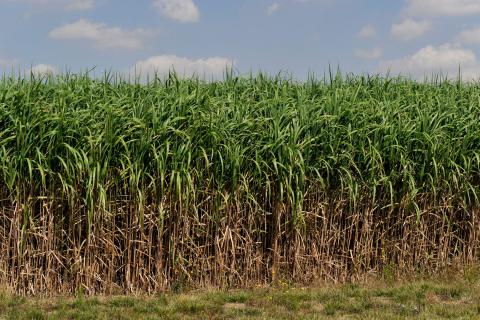


As part of the Biomass Feedstocks Innovation Program, White Horse Energy are developing a transportable pelletiser to process agricultural residues and perennial energy crops behind the farmgate. This will provide farmers with a diversified and increased revenue stream without interfering with existing operations. For more information, read on.


Perennial biomass crops like miscanthus and short rotation coppice have the potential to meet energy demands as renewable fuels, helping to reduce GHG emissions and strive towards Net Zero.
White Horse Energy have secured funding from Department of Energy Security and Net Zero as part of the Biomass Feedstocks Innovation Programme to develop a transportable pelletising technology. This will be deployed at farm level with the capability of processing agricultural residues and perennial energy crops into industrial standard biomass pellets. This produces a high-density renewable energy source, for which the demand is growing substantially because of the need to find alternatives to fossil fuels. A prototype of the mobile pelletiser is currently being developed ready to enter the market. White Horse Energy hopes to provide farmers with an opportunity to increase farm revenue, all year round, without interfering with existing operations. Due to a lack of domestic production, current UK demand for biomass feedstocks significantly outweighs available supply. Therefore, a large proportion of biomass material is currently imported, which limits the sustainable nature of this energy source. White Horse Energy’s innovation will increase the viability of UK production and provide farmers with the opportunity to diversify into a new UK market, with lower environmental impacts and input costs. White Horse Energy are keen to engage with farmers during this development stage to understand the issues and concerns within the agricultural industry that affect growers most. This engagement assists in shaping the project to provide a diversification option that contributes positively to both the environment and farm income. Ultimately producing a solution that meets a wide variety of needs for everyone.
Climate change threatens our ability to ensure global food security, eradicate poverty and achieve sustainable development. In 2016, 31 percent of global emissions originating from human activity came from agrifood systems.
Farming is intricately connected to the environment in various ways. The relationship between agriculture and the environment is a critical aspect of modern farming practices. Please share information, resources, tools and experiences on the multifaceted dimensions of how farming intersects with the environment.
The key GHGs for agriculture that contribute directly to climate change are: Carbon dioxide (CO2) Methane (CH4) Nitrous oxide (N2O) All these GHGs are often grouped under the umbrella term ‘carbon’.
This Topic doesn't yet have a Stewarded summary, but connected groups, content and organisations show below. Click the 'Ask to Join' button if you would like to be a Steward for this Topic and provide a summary of current knowledge and recommend useful resources, organisations, networks and projects. "Like" this Topic if you would like to see it prioritised for providing a wikipedia style summary.